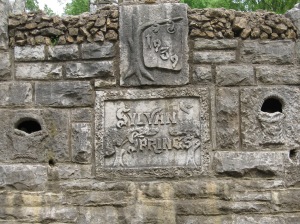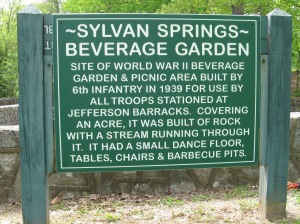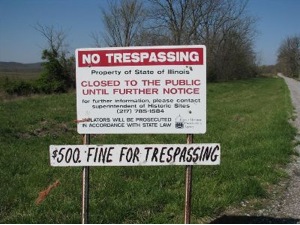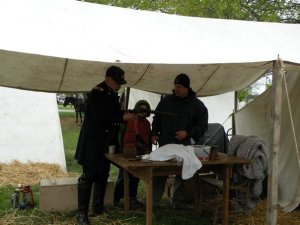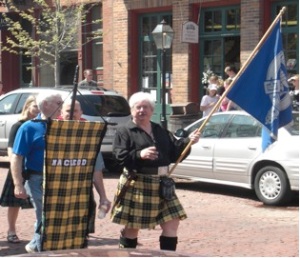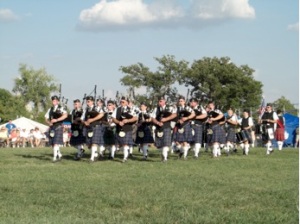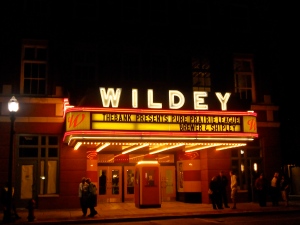by Jeremy Manczuk-
Sylvan Springs Park (located in South St. Louis County) sits in stark historical contrast to its neighbor, Jefferson Barracks National Cemetery. Situated on 331 acres alongside the Mississippi River, Jefferson Barracks National Cemetery is home to nearly 200,000 soldier’s graves and was placed on the National Register of Historic Places in 1998. The seemingly endless rows of unadorned, white tombstones are a vivid reminder of the attraction military service holds in the mind of the American public and, in some cases, of the price that attraction can carry. Jefferson Barracks County Park (the other neighbor of Sylvan Springs and the National Cemetery) was home to the Jefferson Barracks Military Post which was decommissioned in 1946 after 120 years of military presence. This park is now the residence of several museums – in fact, the Missouri Civil War Museum is scheduled to open there this summer. Historical recollection, celebration, and interpretation abound!
Poor Sylvan Springs, unfortunately, cannot compete. Historically speaking, all Sylvan Springs can claim – in the manner of tangible historical artifact – is an old, but well-kept picnic area built around a spring and a sign posted to inform passers-by of its origins. There are no historical intermediaries to assist the public with conclusions; there are no sweeping generalizations; there is no thesis. Built by the Missouri 6th Infantry in 1939, in conjunction with the Civilian Conservation Corps, the beverage garden offered only relief from a world destined – as all worlds, I imagine, are so fated – to change forever. It is this relief that I daydream about whenever I happen to be in this spot. Though the world was just beginning to become visibly entangled in a horrific war that would alter the lives of so many these young soldiers, they and their guests sought brief solace by this spring in the form of barbeques and nighttime dances.
All of this conjecture is, of course, solely a product of my imagination. I do not know what became of the 6th Infantry as a whole or of the individuals who comprised it. If I were a better, more diligent historian I imagine I could find out. In the interest of avoiding boredom, I think I will not. For the purpose of this blog posting, however, it does not really matter. Dreams and imagination are constant presences in the construction of human history. When we allow own dreams and imaginations to interact with those of the past…well, I believe that is the point at which limitations evaporate and history becomes incredibly interesting. My point is–and though I feel I am in danger of being labeled an addle-brained, new- age, phony-baloney I will persist–that we interact with history much more than we think we do. Historians (public or otherwise) generally offer the public a beneficial source of historical information and interpretation. That same public, however, may be best served, at times, left to their own devices.
